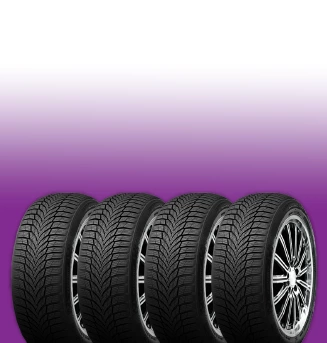How Your Check Engine Light Works
July 16, 2022
Have you ever had an experience like this in Lake Orion, Michigan? You drive through the one of those automatic car washes. When you get to the end, where the dryer is blowing, your Check Engine light starts flashing!
You fear the worst, but within a block or two, the light stops flashing, but stays on. By the next day, the light is off.
You wonder; "What was going on?" Well, it's actually a good lesson in how the Check Engine light works.
Your air intake system has a sensor that measures how much air is coming through it. When you went under the high-speed dryer, all that air was blasting past the sensor. Your engine computer was saying, there shouldn't be that much air when the engine is just idling. Something's wrong. Whatever's wrong could cause some serious engine damage.
Warning, warning! It flashes the Check Engine light to alert you to take immediate action.
It stopped flashing because once you were out from under the dryer, the airflow returned to normal. Now the engine control computer says the danger is past, but I'm still concerned, I'll keep this light on for now.
Then the Check Engine light goes off in a day or two.
The condition never did recur, so the computer says whatever it was, it's gone now. The danger is past, I'll turn that light off.
Now a flashing Check Engine light is serious. You need to get it into Tire Warehouse Depot as soon as possible. But if it stops flashing you can wait a few days, so you have time to see if the problem will clear itself or if you need to get it checked. How does the computer know when to clear itself?
Think of it this way. The engine control computer is the brain that can make adjustments to manage the engine. Things like alter the air-to- fuel mix, spark advance and so on. The computer relies on a series of sensors to get the information it needs to make decisions on what to do.
The computer knows what readings are in a normal range for various conditions. Get out of range, and it logs a trouble code and lights up the Check Engine warning.
The computer will then try to make adjustments if it can. If the computer can't compensate for the problem, the Check Engine light stays on.
The computer logs a trouble code. Some people think the code will tell the technician exactly what's wrong.
Actually, the code will tell the technician what sensor reading is out of parameters. It can't really tell him why, because there could be any number of causes.
Let's say you're feeling hot. You get your heat sensor out – a thermometer – put it under our tongue and in a minute or two you learn that you have a fever of 104 degrees F (40 degrees C).
You know your symptom – a fever – but you don't know what's causing it. Is it the flu, a sinus infection or appendicitis?
You need more information than just that one sensor reading. But it does give you a place to start and narrows down the possible problems.
There are reports on the internet telling you that you can just go down to an auto parts store and get them to read your trouble code or buy a cheap scan tool to do it yourself.
There are two problems with that. First, the computer stores some trouble codes in short term memory and some in permanent memory. Each manufacturer's computer stores generic trouble codes, but they also store codes that are specific to their brand.
A cheap, generic scan tool, like you can buy online or that the auto parts store uses, doesn't have the ability to retrieve long-term storage or manufacturer specific codes. Your Lake Orion, Michigan, service center has spent a lot of money on high-end scan tools and software to do a deep retrieval of information from your engine control computer.
The second problem is that once you've got the information, do you know what to do with it? For example, a very common trouble code comes up when the reading on the oxygen sensor is out of whack.
So the common solution is for the auto parts store to sell you a new oxygen sensor — which is not cheap — and send you off on your way. Now your oxygen sensor may indeed have been bad and needed replacing. But the error code could have come from any of a dozen of other problems.
How do you know the right solution? Back to the fever analogy, do you need surgery or an aspirin? Leave it to the pros at Tire Warehouse Depot. Give us a call and let us help you resolve your check engine light issue.
Tire Warehouse Depot
250 N. Lapeer Rd.
Lake Orion, Michigan 48362
248-929-0699
Need Service?
More articles from Tire Warehouse Depot

TCB your PCV (PCV Valve Replacement)
April 13, 2025
Your gasoline engine goes through some exhausting work. Yes, it's truly exhausting, as in: it produces exhaust! And when your engine starts behaving like it's exhausted, such as running poorly or getting lousy fuel economy, the trouble may be something called a PCV valve. Did you know it's a ser... More

When it Comes to Air Filters, Change is Good (Clogged Air Filter)
April 6, 2025
Engine air filters may not seem like a big deal, but when theyre clogged up with dirt, dust, and insects, your engine could wind up choking for air and not delivering you the power and performance it was designed to give. There are actually a couple of air filters in your vehicle. One filters th... More

Your Vehicle's Other Power Plant (Alternator Replacement)
March 30, 2025
Your vehicle's engine is probably the first thing that comes to mind when you think of a power plant. But it has another power source that is vital as well: the alternator. The alternator is what puts out the electricity that powers such things as your lights, power windows, sound system, and na... More










